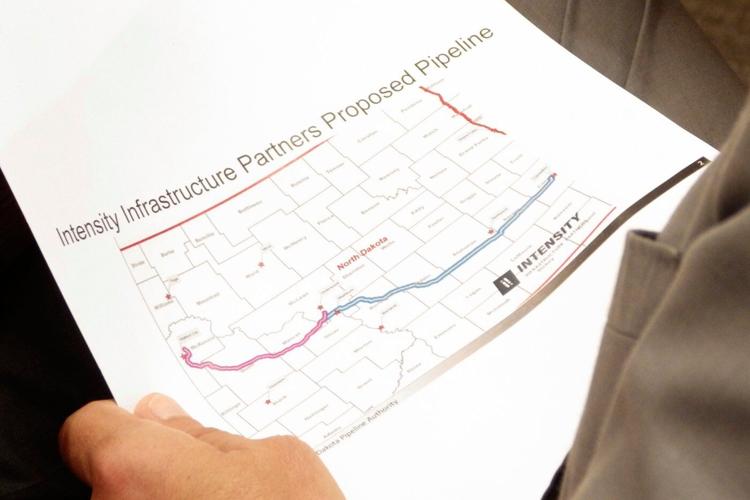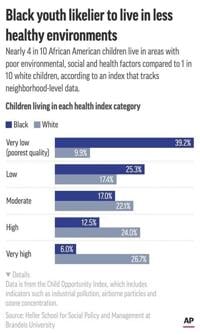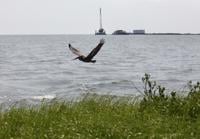BISMARCK, N.D. (AP) — A state official briefed regulators Thursday on two separate underground pipelines that companies plan to build across hundreds of miles of North Dakota, bringing natural gas from the oil fields in the west to mostly industrial users in the more populated east.
Both pipelines — one by Intensity Infrastructure Partners and Rainbow Energy Center, the other by WBI Energy — would span about 350 miles (563 kilometers) roughly from the Watford City to Fargo areas. Segments would come into service in 2029 and 2030. The companies didn’t disclose the projects’ costs.
The presentation to a state industrial panel of elected officials was among the first steps in a process for the state to sign on with a 10-year, $50 million-per-year line of credit. That is essentially a backstop so projects can proceed with the intent that the state back out one day when other users join. Companies won't build a pipeline without firm commitments from users.
North Dakota has a critical need for more natural gas transportation as oil wells age and produce more natural gas relative to oil, North Dakota Pipeline Authority Director Justin Kringstad said.
Republican welcomed the projects for helping oil production, which is a
“If you can't move your gas and you have a finite amount of capital to invest in drilling, you're going to drill where you can market your gas, or you're going to do it in a different manner," the governor said. “So being able to move gas out of the Bakken (oil region) will help produce more oil.”
North Dakota is producing a near-record 3.5 billion cubic feet (99.1 million cubic liters) per day of natural gas.
The state has long wanted such pipelines, but efforts never succeeded in the past because of developments that hurt demand, such as oil price declines and the COVID-19 pandemic, Kringstad said.
“Today we're seeing a much stronger pull on the demand side than we've ever seen in these efforts," Kringstad said. “We've always seen the push and the need in the west, but today the appetite across the state for natural gas and for energy is at the highest that I've ever seen.”
The gas will mostly be used for industrial purposes but also growing residential needs, he said. The pipelines could carry as much as 1 million dekatherms per day, a volume he said would be “extremely meaningful in addressing the challenges that North Dakota is facing."
Capturing and moving the gas out of the oil field has been an issue over the years as officials and industry have sought to boost infrastructure and reduce flaring, or the burning of natural gas into the air. Although the state captured about 96% of the gas , critics have long raised environmental and health concerns about flaring.
The Trump administration increased domestic energy production, largely from fossil fuel sources. a former North Dakota governor and now the has long called for raising energy extraction efforts.
Other pipeline projects in North Dakota have drawn enormous pushback in recent years, including huge and around the Midwest to Summit Carbon Solutions' proposed carbon dioxide network.
Armstrong said some degree of pushback is likely, “but the reality is pipelines are the easiest way to move things.”
It's unclear whether eminent domain, or the taking of private property with just compensation, will come into play for the pipelines. A Rainbow Enegry Center leader said Intensity Infrastructure Partners has never utilized eminent domain in more than 2,000 miles (3,200 kilometers) of pipeline it has built in North Dakota. A WBI Energy spokesperson said he couldn't answer.
Iowa-based Summit Carbon Solutions intense for its proposed five-state carbon dioxide pipeline. Some eminent domain as the company seeks to build the pipeline, and South Dakota’s governor earlier this year on eminent domain for carbon dioxide pipelines.











































